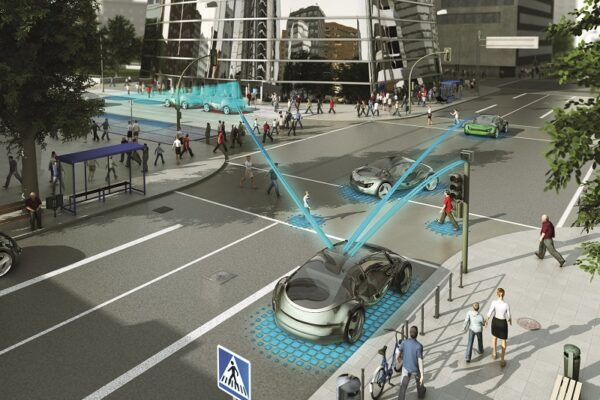
On-board, off-board sensor data fused for better traffic flow
Modern vehicles are being equipped with more and more on-board sensors. Driver assistance systems and autonomous driving transform cars and trucks into moving measuring stations. In addition, stationary sensors in the transport infrastructure of many cities provide up-to-date information on traffic flows, road utilisation or car park occupancy. Drivers themselves also bring sensors, especially in their smartphones. However, a combined evaluation of these mobile and stationary sensor data has not yet taken place. However, such an evaluation could help to optimise the utilisation of the transport infrastructure, reduce congestion, increase safety or reduce CO2 emissions.
In the joint project SADA (Smart Adaptive Data Aggregation) the DFKI Robotics Innovation Center under the direction of Prof. Frank Kirchner, BaseLabs GmbH, NXP Semiconductors, fortiss GmbH and ALL4IP Technologies, coordinated by Siemens, on a system that enables dynamic integration and evaluation of data from the car. The challenge: The data comes from very different sensors that are in no way coordinated with each other. The adaptation and fusion process developed for this purpose is able to recognize in real time which data is available to it, select the relevant data for the application and thus react quickly. In this way, the project realizes the intelligent and flexible linking of data from the on-board sensors of a car with data from previously unknown stationary infrastructure sensors.
As a central system component, the Robotics Innovation Center developed a back-end in the project that serves on the one hand to manage and process sensor data and on the other hand is capable of correlating mobile and stationary sensors. The back-end manages formalized semantic metadata that describes the properties and contextual references of the available sensors and data sets and thus forms the basis for an automated ad-hoc fusion of heterogeneous sensor data. In addition, the DFKI scientists implemented an efficient and fail-safe communication infrastructure that ensures that the data and processing capacities required to implement complex tasks in real time are available at all times.
In addition, the DFKI research division in SADA developed a so-called range extender – a trailer for electric cars equipped with additional batteries and sensors. These allow the vehicle to cover longer distances and record additional environmental data.
At the end of the project, the project partners will demonstrate the results on the robotic electric vehicle EO smart connecting car 2, which serves as a demonstration platform in SADA. Thanks to extended all-wheel steering, the robot car can drive sideways and turn on the spot. It is also able to change its morphology and shrink almost 80 cm in length. The demonstration will take place in hall 2, booth C28.
 If you enjoyed this article, you will like the following ones: don't miss them by subscribing to :
eeNews on Google News
If you enjoyed this article, you will like the following ones: don't miss them by subscribing to :
eeNews on Google News



